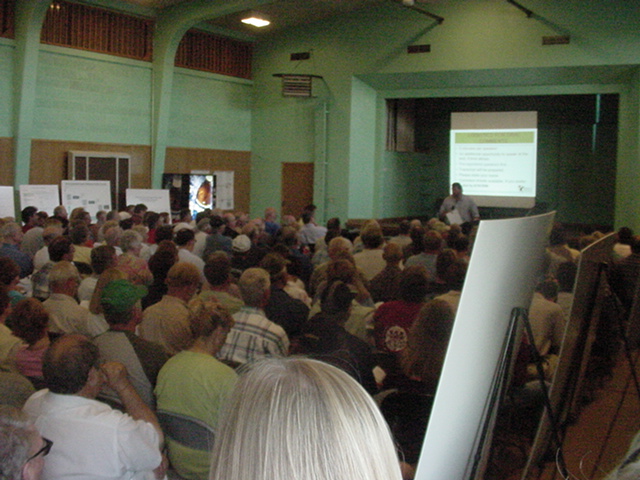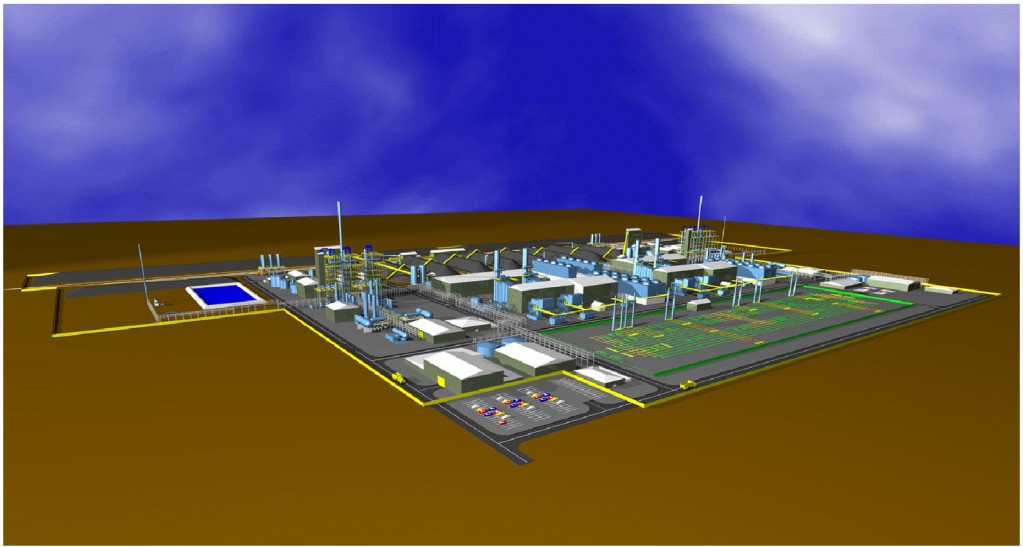It was 20 years ago today…
October 22nd, 2022
EXCELSIOR ENERGY’S MESABA PROJECT
PARTIAL DOCUMENT REPOSITORY
Well, a bit more than 20 years ago… January 15, 2002, just after the start of the legislative session, I was at an energy committee meeting, Senate? House? I think Senate was first, then heard again at House, and the following year they got their legislation through as a part of the 2003 Prairie Island bill.
- The Excelsior Energy link I’m using is compliments of waybackmachine. Note that now, if you plug in “excelsiorenergy.com” it becomes “excelsiorcapital.com (Excelsior Energy Capital).” essentially at a marina at 21960 Minnetonka Blvd.! Related?
Anyway, there was a presentation back in 2002 about the greatest thing since sliced bread (NOT!), a coal gasification project proposed for “somewhere” on the Range. Here’s what they presented:
Note the parts about “brownfield” and “existing infrastructure.” LIES, it’s that simple. Here’s what their site looked like, this was at the DOE and locals site visit in 2005:

Starting in 2005, I was representing “mncoalgasplant,” landowners and residents near the proposed project, joined in tandem by Citizens Against the Mesaba Project (CAMP) (site circa 2013 with live links, thanks waybackmachine!). We had such active folks, every hearing was PACKED, and eventually the project faded, never formally declared dead, but piece by piece, it went away.
HOWEVER, Excelsior Energy did manage to get an save passed by the legislature for a natural gas plant:
Week before last, I picked up files from a cohort who shall remain unnamed, and am scanning in boxes of files, to post here, and recycle hard copies for biomass (UGH, but that’s what Red Wing does. Thanks, Xcel Energy!). I’ll be posting them, some interesting stuff if you’re into energy and political and capital intrigue, some purely inside baseball that no one will care about.
MONEY TRACKING – Spreadsheets and invoices to IRRB for reimbursement
Various Contractor Invoices (some redacted)
What a pain in the patoot that was — TWO ENTIRE WASTEBASKET OF SCANNING!
Trump and ‘clean coal’ — just say NO!
November 13th, 2016
After this election, there are so many things to be concerned about, so many reasons to be utterly horrified… a Muslim database, Trump’s fraud trial to begin November 28th, promise of mass deportations, sharp increase in hate crimes, assaults and threats on the street and in the schools (and online, oh my!). Trump’s “100 Days” plan was out in October, and has many points, full of words to decode, including a ‘clean coal’ reference, showing he’s clueless, just clueless:
Trump’s Contract with the American voter — the First 100 Days
In the 2nd and 3rd debate, Trump used those two words that have deep meaning to me, “clean coal,” because of Excelsior Energy’s Mesaba Project here in Minnesota, and because of the NRG proposed IGCC plant in Delaware, both of which were defeated after a long protracted fight. There is no such thing as ‘clean coal.”
Coal gasification is one thing that my coal-plant designing Mechanical Engineer father and I had some bonding moments over, going over EPRI coal gasification reports from the 80s and the Mesaba application… And I had the pleasure of meeting and working alongside my father’s boss’s son, who is also an engineer, formerly with NSP/Xcel, who knew what a bad idea coal gasification is. Oh yeah, we who fought these projects have learned a lot about coal gasification, “carbon capture and storage,” and will not go there again (see Legalectric and CAMP – Citizens Against the Mesaba Project sites for more info). We know it doesn’t work. And experience with the few projects that did go forward, what a mess, cost overruns beyond the wildest SWAG estimate, inability to get the plant running… Trump, don’t even think about it:
IGCC – Pipedreams of Green & Clean
IGCC, coal gasification, is nothing new. And despite its long history, it’s a history of failure, failure to live up to promises, failure to operate as a workable technology, and failure to produce electricity at a marketable cost, failure to produce electricity at all! On top of that, it’s often touted as being available with “CO2 capture and storage” which it is not. That’s a flat out lie. Check this old Legalectric post:
More on Carbon Capture Pipedream
A key to this promotion is massive subsidies from state and federal sources, and selection of locations desperate for economic jump-start, so desperate that they’ll bite on a project this absurd, places like Minnesota’s Iron Range, or southern Indiana, or Mississippi. The financing scam was put together at Harvard, and this blueprint has been used for all of these IGCC projects:
That, coupled with massive payments to “environmental” organizations to promote coal gasification, and they were off to the races.
Joyce Foundation PROMOTES coal gasification
Doris Duke Charitable Foundation & IGCC – WHY???
VP-elect Mike Pence should know all about coal gasification, he’s from Indiana. Indiana is coal generation central, and has had a couple of IGCC projects planned, construction started, and built. Indiana’s Wabash Valley plant is a perfect example, a small IGCC plant that was built, and after it was “completed,” took 22 on-site engineers to keep it running, now and then, at a greatly reduced capacity.
Wabash River Final Technical Report (it was “routinely” in violation of its water permit for selenium, cyanide and arsenic)
When they tried to sell the Wabash Valley plant recently, of course no one wanted it:
Wabash Valley coal gasification plant closing!
And another Indiana plant, with huge cost overruns that never started operating:
Rockport coal gasification plant dies – Indianapolis Star
Coal News: $2.8B coal gasification plant in Indiana canceled
And then there’s Edwardsport IGCC plant, also in Indiana, what a disaster:
Edwardsport plant not at promised capacity
Settlement won’t be the last word on controversial Indiana coal plant
Duke Energy Edwardsport Plant Settlement Expanded
The original settlement in September was a response to the plant’s rising operating costs while failing to meet performance expectations.
In the new agreement, Duke Energy agrees not to charge customers for $87.5 million of the operating costs of the Edwardsport plant, $2.5 million more than the original agreement.
And note that problems with Edwardsport tie in to similar problems with the Kemper IGCC plant in Mississippi:
Indiana ‘cease fire’ could provide a model for Mississippi regulators
Yes, in Mississippi, the Kemper IGCC plant is proving to be a problem, and yes, folks, note the Obama promotion of IGCC — after all, Obama is from Illinois, a coal state, and had lots of support from coal lobbyists. Check this detailed NY Times article:
Piles of Dirty Secrets Behind a Model “Clean Coal’ project: Mississippi project, a centerpiece of President Obama’s climate plan, has been plagued by problems that managers tried to conceal, and by cost overruns and questions of who will pay.
The sense of hope is fading fast, however. The Kemper coal plant is more than two years behind schedule and more than $4 billion over its initial budget, $2.4 billion, and it is still not operational.
The plant and its owner, Southern Company, are the focus of a Securities and Exchange Commission investigation, and ratepayers, alleging fraud, are suing the company. Members of Congress have described the project as more boondoggle than boon. The mismanagement is particularly egregious, they say, given the urgent need to rein in the largest source of dangerous emissions around the world: coal plants.
Trump, just don’t.
Here’s why it’s good the Mesaba Project was not built!
June 14th, 2015
Remember the Excelsior Energy Mesaba Project (see Legalectric posts and Citizens Against the Mesaba Project’s “Camp Site”), the boondoggle coal gasification plant that almost was, the project that got every legislative perk possible, got financing and grants based on wishful thinking and that “something else” that we just can’t identify (without which, who would think this was a good idea? That plant that was to be built, according to the special legislation for this project, on a site WITH INFRASTRUCTURE? This site… dig the infrastructure!
Anyway, it wasn’t built here. But a similar plant WAS built in Indiana, the Edwardsport plant owned by Duke Energy. As with the Mesaba Project it was proposed at a reasonable price, legislators were first told $700 million, and then it went upwards of $2.11 billion. For Edwardsport, same story, and that price kept going up, up, up, and in Indiana, it was so extreme that costs recoverable from ratepayers were capped by the Indiana Public Utility Commission at $2.9 BILLION. It was allowed to be built, and it started operating, sort of… Average output has been 41%, when an 80+% capacity factor was promised. Repairs? That’s putting it mildly. Now they’re going to try to get cost recovery for that.
Now, let’s not all forget all the money given by the Joyce Foundation to support this nonsense.
+++++++++++++
Here’s a specific and eloquent comment from Michael Mullet, very involved in opposition to the Edwardsport fiasco:












